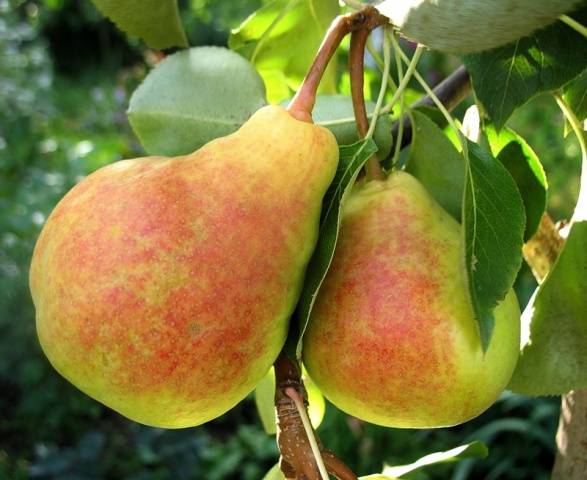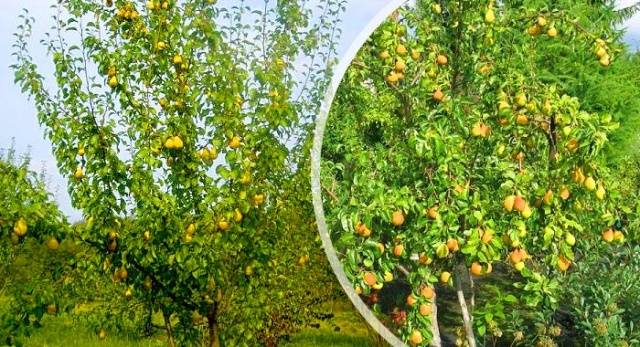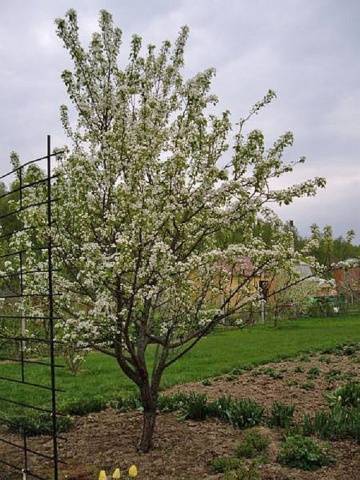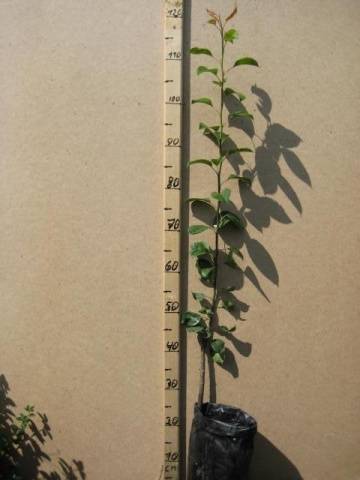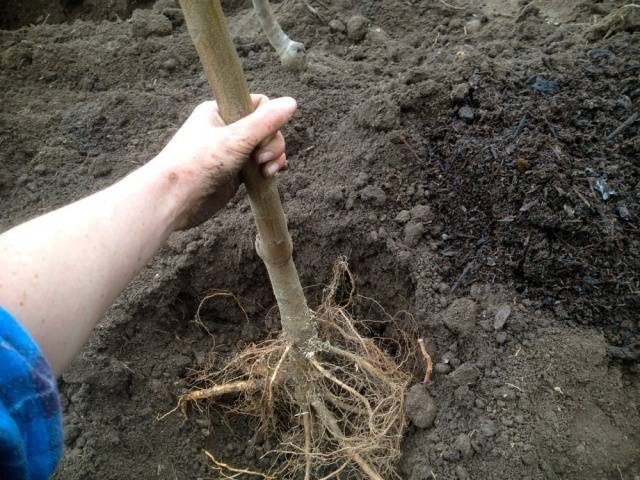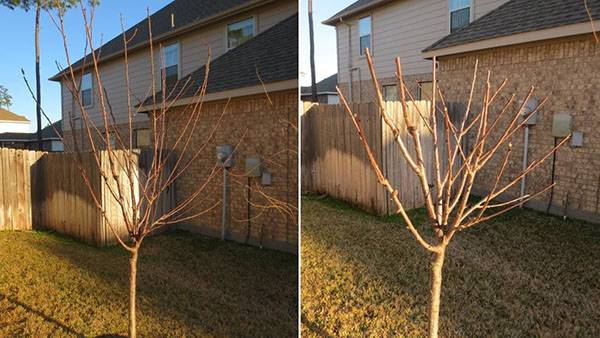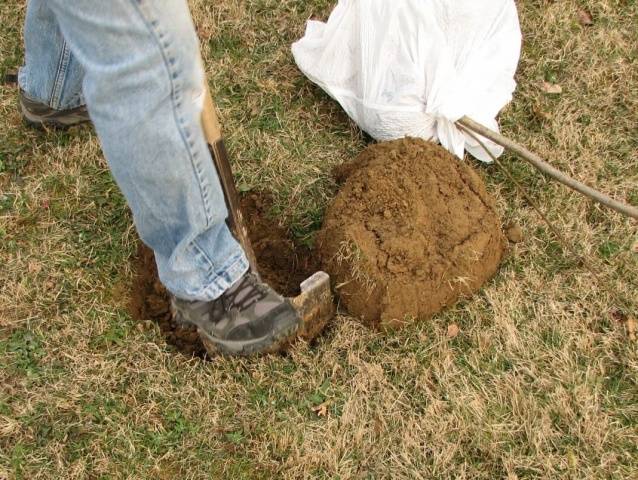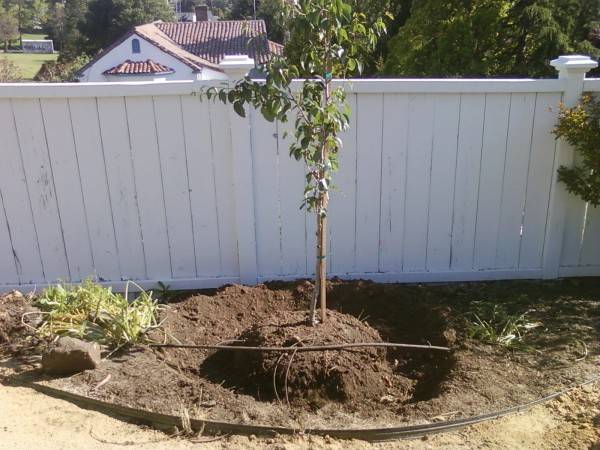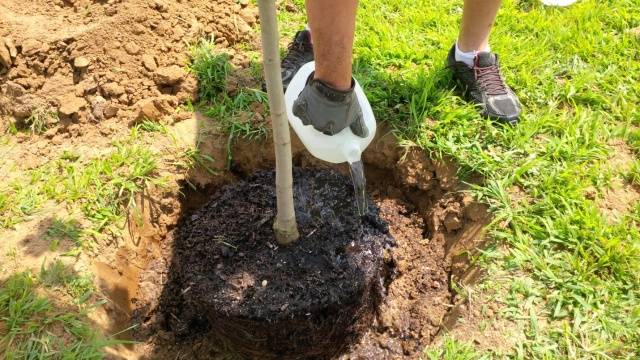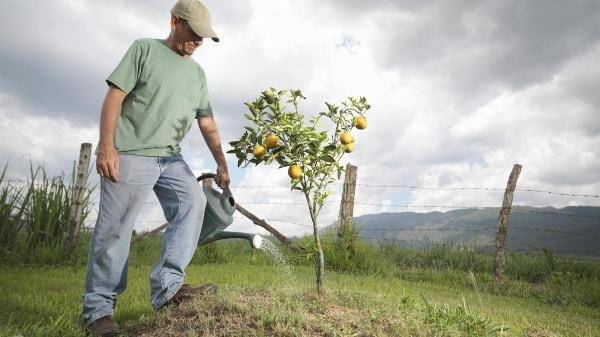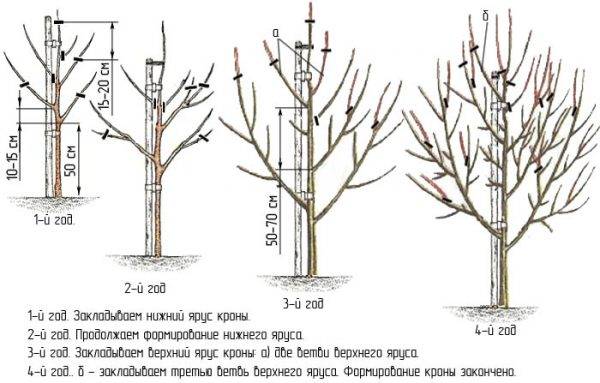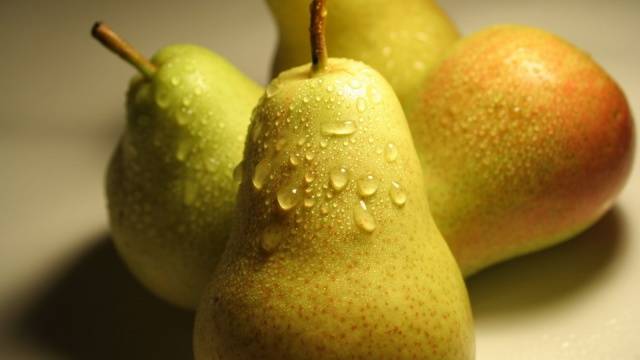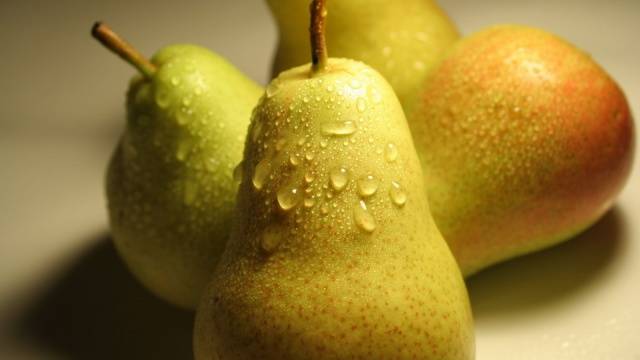Content
The pear variety Lada was bred by Moscow breeders by crossing Forest Beauties and Olga. Pear Lada is quite well distributed in Russia, very often this variety is grown by summer residents and gardeners from the Moscow region. This variety is famous for tasty fruits and good winter hardiness, but Lada also has its drawbacks, which it is better to learn about before buying seedlings.
Description of pear Lada, photo and reviews gardeners about this variety can be found in the article. Here is a complete description of the pear and the rules for planting and caring for a tree.
Description of pear Lada
The pear variety Lada has many strengths. These include:
- early ripening - this pear is summer, you can harvest in July;
- high yield - about 50 kg of pears from an adult tree;
- scab resistance;
- good winter hardiness - trees do not need to be covered;
- great taste of fruits, their versatility (pears are good both fresh and in the form of preserves, jams and compotes).
Gardeners attribute the disadvantages of the Lada variety to the poor keeping quality of fruits and the inability to transport them - pears quickly deteriorate after collection.
A more detailed description of the variety:
- the height of an adult tree is small, since Lada belongs to the standard varieties;
- the crown of the pear is pyramidal, medium thickened;
- leaves of medium size, oval;
- shoots are long, slightly curved, colored brown;
- inflorescences of medium size and white;
- the fruits are not very large, the weight of each is, on average, 100 grams;
- the color of ripe pears is light yellow with a slight red blush;
- the peel of pears is thin, the flesh is yellowish, fine-grained, sweet and sour, with a weak aroma;
- the fruits stick well to the branches and rarely fall off;
- you need to store plucked pears at a temperature of 0 degrees, then they will lie for about two months;
- under normal conditions, pears of the Lada variety do not lie well;
- the yield of the variety increases if there are pollinators next to the tree: Moskvichka, Chizhovskaya, Rogneda and other varieties of pears;
- the pear tree is fast-growing - Lada begins to bear fruit already in the fourth year after planting;
- the Lada variety is very resistant to frost, diseases, pests and unfavorable environmental factors.
Pear Lada: planting and care
It is not difficult to grow the Lada variety in your own garden, because this pear is one of the most unpretentious and unpretentious types of soil. It must be borne in mind that abundant fruiting of a pear tree is possible only in the case of complex fertilizing and regular watering, as well as correct pruning and proper care.
How to choose a pick-up location
Pear Lada prefers warm, well-sunlit areas of the garden, therefore, to plant a tree, you need to choose a spacious place that is located on the sunny side of the site.
It is better to protect the pear from strong winds and drafts. This can be done by planting a tree near a high wall of a house or outbuilding, or near a fence. Only in this case, you need to follow the sun - most of the day it should illuminate Lada.
Like all fruit trees, the Lada pear loves moisture, but an excessive amount of water can lead to rapid decay of the tree roots. That is why, for planting pears, they choose a place where the groundwater level is below a meter from the bottom of the seedling pit.
The soil of the Lada variety needs nutritious and friable, good air permeability to the roots of the tree. Chernozems and loams are best suited. If there is clay soil in the garden, it is necessary to increase its air permeability by adding sand or peat - otherwise Lada will not have enough air.
Sandy soils are less preferred for pear planting, but their composition can also be improved. To do this, the soil from the pit is mixed with peat, humus, compost.
Sapling selection
You should buy a pear tree sapling in good specialized stores or special nurseries. For planting, trees of one or two years of age are most suitable, more mature seedlings tolerate transplanting very poorly, lag behind in growth, and often disappear.
The seedling should have a smooth, shiny trunk, several side shoots are permissible (for two-year-old trees). The leaves on the pear should be shiny, healthy, without dark spots and bloom.
The roots of a good seedling are long and uniform, without traces of rot and damage. If a young pear has rotten roots, they must be pruned with a sharp pruner.
How to plant a pear Lada
You can plant a young pear tree in both spring and autumn. In spring, it is best to plant seedlings in early May, when the threat of return frosts has passed, and the soil will still be sufficiently moist.
Reviews of many gardeners indicate that the autumn planting of pear trees is still preferable - this way Lada takes root better, you just need to choose the right planting time. The optimal time for planting Lada seedlings in the middle of the country is the end of September. In other regions, you need to focus on the predicted weather - a tree needs at least a month before frost to take root and get stronger.
The process of planting pears of the Lada variety is quite simple:
- The first step is to prepare the pit. At the site chosen for planting, a hole is dug, the depth of which is about a meter, and the diameter is 60-70 cm.You need to dig a hole in advance: for spring planting, it is better to do this from the fall of last season, and in the fall they begin to dig a hole 2-3 weeks before the next landing. This is necessary so that the soil shrinks even before the seedling is transferred, otherwise the earth will tighten the tree, the root collar will be too low - the pear will stop growing or disappear altogether.
- A nutrient mixture is introduced into the hole dug for Lada: a bucket of humus or compost, 30 grams of potassium salt and 50 grams of superphosphate. This fertilizer mixes with the fertile top soil and spreads it over the bottom of the pit so that the soil fills more than half the volume.
- Around the pear pit, the ground must be dug to a shallow depth - loosening the soil will provide air flow to the roots of the Lada.
- A wooden peg is driven in 20-30 cm from the center of the pit, the length of which should be 160-180 cm (the upper part of the stake should be 60 cm from the ground level on the site, as in the photo).
- The seedling is prepared for planting, if necessary, it is soaked in a clay mash, and the roots are straightened.A young pear is set in the center of the pit and the roots are gradually covered with earth. As a result, the root collar of the Lada seedling should be 3-5 cm above ground level.
- The soil is lightly tamped, the pear is tied to the support.
- A small earthen roller is made around the tree and watered until the water stops absorbing into the ground (about three buckets).
- Mulch the soil around Lada with peat or humus, sawdust, straw so that moisture evaporates less.
How to care for a Lada pear
The Lada variety is unpretentious, complex care of young and old trees is not required.
In order for the Lada pear to bear fruit well and does not age for a long time, she needs the following:
- Watering is necessary only when there is no rain at all in summer. In this case, it is necessary to water the tree with two buckets of water at least once a week.
- Pruning Lada needs twice a year. This will help to properly form the crown in order to avoid thickening of the shoots. In the spring, shoots that grow incorrectly are cut out to the trunk of the tree, as well as those branches that intertwine with others and create excess crown density. In autumn, pruning is sanitary: dry, diseased and broken shoots are removed.
- In the middle latitudes, the variety hibernates without shelter, as it is considered to be quite winter hardy. In colder climates, it is necessary to mulch the near-trunk circle with peat so that the mulch height is 30 cm - this is the average depth of soil freezing.
- In early spring, pear tree is desirable whitewashto protect against rodents and sunburn.
- At least once a year, a tree is needed feed organic or mineral fertilizers. I use fresh manure or chicken droppings only in autumn, in spring a more suitable option is mineral complexes, humus, wood ash.
- The Lada variety is resistant to scab and pest attacks, but the tree still needs periodically inspect for defeat. If necessary, carry out preventive treatment before the period of fruit setting.
You can harvest in late July or early August. Since pears are poorly stored, it is recommended to use the fruit immediately after harvest.
Feedback
Conclusion
Like any variety, the Lada pear has its own strengths and weaknesses. This variety is perfect for summer residents from the middle lane, because it practically does not need care and watering, and gives high yields. The gardener can only collect ripe fruits, occasionally feed and regularly prune the tree.
More information about the Lada variety is described in this video:
